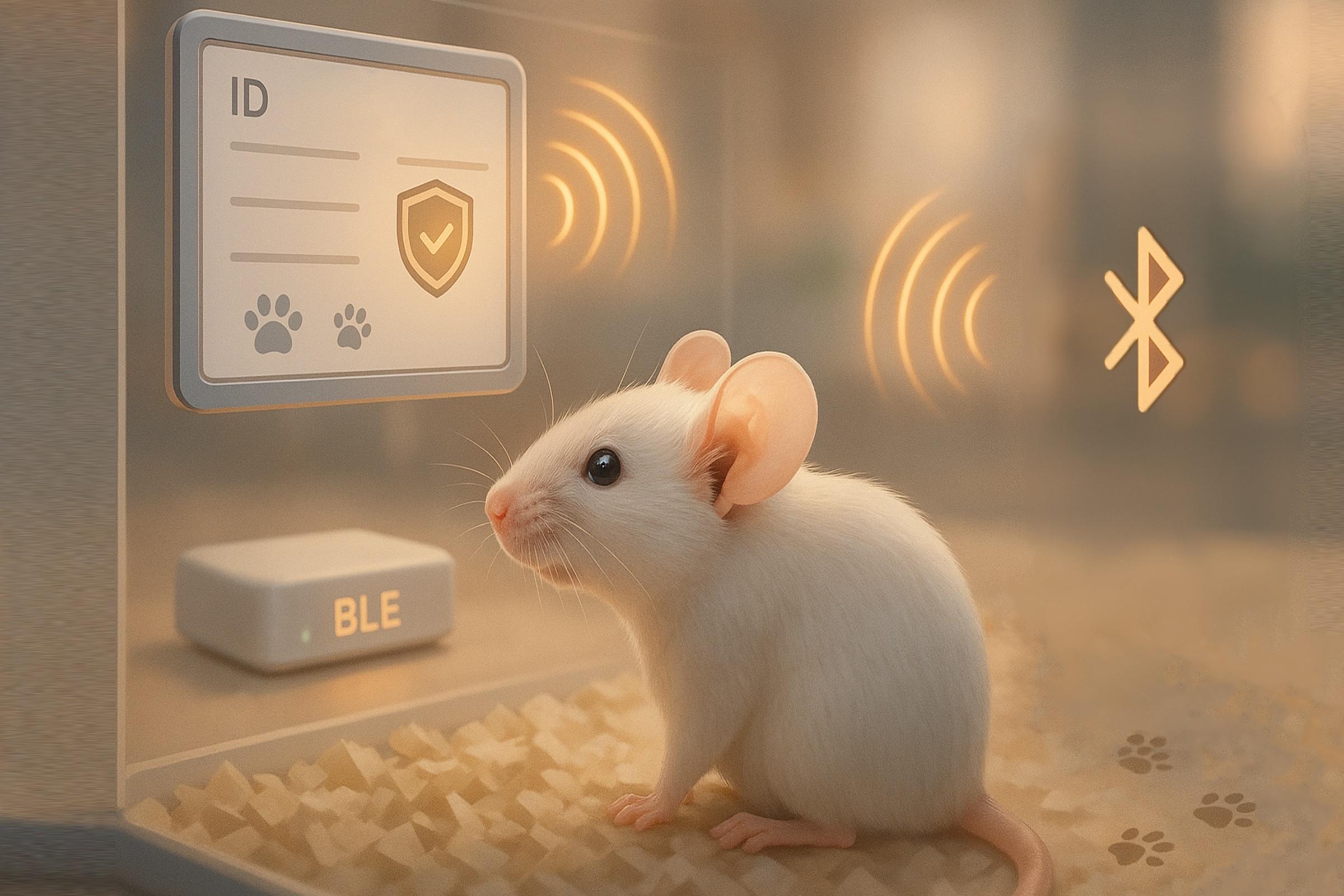Bluetooth Low Energy (BLE) – The Smart Choice for Digital Cage Cards: Reliability, Power Efficiency, and Cost-Effectiveness
Selecting the right wireless technology for digital cage cards is essential for operational efficiency in animal research environments. The main options include Bluetooth Low Energy (BLE), Infrared (IR), ZigBee, RF, and Wi-Fi – each using non-ionizing electromagnetic energy and all widely recognized by international health and regulatory organizations as harmless to animals and humans.
At PicoTeam, we chose BLE for its outstanding energy efficiency, long battery life, robust security, and reliable two-way data exchange. With its extended range, seamless integration into existing systems, and scalable architecture, BLE delivers a cost-effective solution that fits facilities of any size.
Key Features of BLE for Digital Cage Cards
- Low Power Use: Enables years of battery life, minimizing maintenance.
- Reliable Data Exchange: Stable, secure communication even in dense environments.
- Scalable & Flexible: Systems expand or reconfigure easily as needs change.
- Real-Time Updates: Fast pairing and instant data transmission streamline workflows.
- Optimized for Dense Spaces: Performs well even with many devices present.
- Strong Security: Supports advanced encryption for sensitive data.
- Animal Friendly: No impact on animal behavior or welfare.
BLE in Research Animal Facilities: Practical Advantages
One of the foremost benefits of adopting Bluetooth Low Energy (BLE) for digital cage cards is its outstandingly low power consumption—especially when compared to Wi-Fi, which requires considerably more energy and results in a substantially shorter battery life. BLE-powered devices can operate for years on a single battery, thanks to highly efficient protocols and ultra-low-power sleep modes that minimize energy use when not transmitting. This remarkable efficiency not only extends device lifespan but also significantly reduces operational costs and minimizes the need for staff intervention in animal rooms.
In addition to energy savings, BLE offers greater flexibility and reliability than Infrared (IR) technology. BLE transmits data through obstacles, covers wide areas, and does not require direct line-of-sight, allowing cage racks and equipment to be arranged freely. While IR typically reaches up to 10 meters under ideal conditions (and only 3 to 5 meters in real-world settings), BLE can achieve up to 100 meters and reliably covers around 30 meters in animal facilities. This means fewer BLE base stations are needed, reducing hardware costs and simplifying installation. BLE also supports advanced encryption for data security and enables robust two-way communication, even across obstacles. In contrast, most IR systems are limited to one-way communication, making them less suitable for automation. Moreover, IR signals are highly vulnerable to blockage in dynamic research environments, as moving racks or equipment can easily disrupt the line-of-sight and interrupt data transmission. As a result, BLE significantly improves facility efficiency and animal welfare by supporting secure, remote management of digital cage cards.
The table below summarizes the key advantages of BLE in this application:
BLE — Feature Summary for Digital Cage Cards
| Feature | Bluetooth Low Energy ( BLE ) 2.4 GHz |
| Safety | Non-ionizing, internationally recognized as safe |
| Range | Typical: 20–30 m in animal facilities |
| Battery Life | 5 Years (depending on usage) |
| Interference handling | Robust: operates through obstacles, many devices |
| Scalability | Flexible: easy to expand and reconfigure |
| Data Security | Advanced encryption, supports secure data transfer |
| Communication Type | Reliable two-way, through obstacles |
| Power Consumption | Very low: optimized for long battery life |
| Effect on Animals | No disturbance; does not affect behavior or welfare |
Conclusion
Bluetooth Low Energy (BLE) is the most practical choice for digital cage cards in animal research facilities. Its energy efficiency, robust security, long battery life, and flexible integration ensure reliable performance with minimal maintenance and disruption—supporting both research excellence and animal welfare


